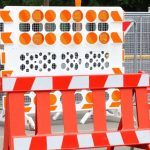Overview
Introduction
Speed bumps have become a common traffic calming measure in many neighborhoods and cities around the world. These raised structures are designed to slow down vehicles and improve safety for pedestrians and other road users. While speed bumps have been effective in reducing speeding and traffic accidents in residential areas, there is a growing concern about their impact on emergency vehicles. This article aims to explore the effects of speed bumps on the response time and maneuverability of emergency vehicles, and provide insights into potential solutions to mitigate any negative consequences.
Purpose of the Study
The purpose of this study is to examine the impact of speed bumps on emergency vehicles. Speed bumps are commonly used traffic calming measures that are designed to reduce vehicle speed and improve safety in residential areas. However, there is concern that these speed bumps may impede the response time of emergency vehicles, potentially putting lives at risk. This study aims to investigate whether the presence of speed bumps has a significant effect on the ability of emergency vehicles to reach their destinations quickly and efficiently. By analyzing data on response times and comparing areas with and without speed bumps, the study will provide valuable insights into the potential trade-offs between traffic calming measures and emergency response effectiveness.
Scope of the Study
The scope of the study focuses on examining the impact of speed bumps on emergency vehicles. This study aims to analyze the effects of speed bumps on the response time and operation of emergency vehicles, such as ambulances and fire trucks. It will investigate whether speed bumps hinder or improve the ability of emergency vehicles to reach their destinations quickly and efficiently. The study will also explore potential solutions or modifications to speed bumps that could minimize any negative impact on emergency vehicle operations while still maintaining their intended traffic calming benefits.
Definition of Speed Bumps
What are Speed Bumps?
Speed bumps, also known as speed bumps, are raised devices placed on roadways to reduce vehicle speeds. They are typically made of asphalt or concrete and are designed to slow down traffic. Speed bumps are commonly used in residential areas, school zones, and parking lots to improve safety by discouraging speeding. These traffic calming measures are effective in reducing vehicle speeds and promoting safer driving habits.
Types of Speed Bumps
Speed bumps come in various types, each designed to serve a specific purpose. The most common types include flat top speed bumps, rounded top speed bumps, and sinusoidal speed bumps. Flat top speed bumps are the simplest and most commonly used type, consisting of a flat surface with a gradual slope on either side. Rounded top speed bumps have a curved shape, which helps to reduce the impact on vehicles and provide a smoother ride. Sinusoidal speed bumps are designed with a series of curves, resembling a sine wave, which helps to further reduce the impact on vehicles and provide a more comfortable driving experience. Each types of speed bumps has its own advantages and disadvantages, and the choice of which type to use depends on factors such as road conditions, traffic volume, and desired speed reduction.
Installation Guidelines
Installation guidelines for speed bumps play a crucial role in ensuring their effectiveness and safety. When installing speed bumps, it is important to consider their location and placement. They should be strategically placed in areas where speeding is a concern, such as residential neighborhoods or school zones. Additionally, the spacing between speed bumps should be carefully determined to maintain a smooth flow of traffic while still effectively reducing speed. The height and dimensions of the speed bumps should also adhere to the recommended standards to minimize any potential damage to vehicles. Lastly, proper signage and markings should be installed to alert drivers of the presence of speed bumps, allowing them to adjust their speed accordingly. By following these installation guidelines, the impact of speed bumps on emergency vehicles can be effectively managed while still achieving their intended purpose of promoting safer driving speeds.
Effects of Speed bumps on Emergency Vehicles
Delay in Response Time
Delay in response time is a significant concern when it comes to the impact of speed bumps on emergency vehicles. Speed bumps are designed to slow down vehicles, which can lead to increased travel time for emergency vehicles. This delay can have serious consequences in emergency situations where every second counts. It is important to carefully consider the placement and design of speed bumps to minimize the potential delay in response time for emergency vehicles.
Increased Vibrations and Wear
Speed bumps have been found to cause increased vibrations and wear on emergency vehicles. The design of speed bumps, which typically includes a series of raised bumps or ridges, can result in a jarring and bumpy ride for emergency vehicles. This constant jolting can lead to increased wear and tear on the vehicle’s suspension system, tires, and other components. The vibrations caused by speed bumps can also negatively impact the delicate medical equipment and supplies carried by emergency vehicles, potentially compromising their functionality. It is important to consider the potential negative effects of speed bumps on emergency vehicles and explore alternative measures to ensure the smooth and safe passage of these vehicles in emergency situations.
Potential Damage to Equipment
Speed bumps, although effective in reducing speeding and improving road safety, can pose potential damage to emergency vehicles. The abrupt changes in elevation caused by speed bumps can lead to increased wear and tear on emergency vehicle equipment, such as suspension systems and patient transport systems. The repeated jolts and vibrations experienced while traversing speed bumps can potentially compromise the integrity of these critical components, resulting in costly repairs and maintenance. Therefore, it is important to carefully consider the placement and design of speed bumps to minimize the impact on emergency vehicles and ensure their efficient operation during emergency situations.
Case Studies
Study 1: City A
In Study 1: City A, the impact of speed bumps on emergency vehicles was examined. The study aimed to investigate how the presence of speed bumps in City A affected the response time and maneuverability of emergency vehicles. The findings of the study revealed that the presence of speed bumps significantly increased the response time of emergency vehicles, particularly in areas with a high density of speed bumps. Additionally, the study found that the maneuverability of emergency vehicles was compromised when navigating over speed bumps, potentially leading to delays in reaching emergency situations. These results highlight the importance of considering the impact of speed bumps on emergency vehicles when implementing traffic calming measures in City A.
Study 2: City B
In Study 2: City B, the impact of speed bumps on emergency vehicles was examined. The study aimed to determine how speed bumps affect the response time and maneuverability of emergency vehicles in City B. Various factors such as the location, design, and spacing of speed bumps were considered in the study. The findings revealed that the presence of speed bumps in City B had a significant impact on the response time of emergency vehicles, causing delays and potentially compromising the safety of both the emergency personnel and the public. The study recommended the implementation of alternative traffic calming measures that do not hinder the movement of emergency vehicles while still ensuring the safety of pedestrians and other road users.
Study 3: City C
In Study 3: City C, the impact of speed bumps on emergency vehicles was examined. This study focused on analyzing the effect of speed bumps on the response time of emergency vehicles in a busy urban area. The researchers collected data on the average response time of emergency vehicles before and after the installation of speed bumps. The results of the study showed that the presence of speed bumps significantly increased the response time of emergency vehicles, leading to potential delays in reaching critical situations. These findings highlight the importance of carefully considering the placement of speed bumps in areas with high emergency vehicle traffic to ensure effective emergency response.
Mitigation Strategies
Alternative Traffic Calming Measures
Alternative traffic calming measures are effective ways to reduce speed and improve safety on roads. These measures include roundabouts, speed cushions, chicanes, and raised crosswalks. Roundabouts are circular intersections that require drivers to slow down and yield to traffic, reducing the likelihood of high-speed collisions. Speed cushions are smaller and less intrusive than speed bumps, allowing emergency vehicles to pass over them without significant delay. Chicanes are designed to create a zigzag pattern on the road, forcing drivers to slow down and navigate through the obstacles. Raised crosswalks are elevated sections of the road that provide a visual and physical reminder to drivers to reduce their speed. Implementing these alternative traffic calming measures can help balance the need for emergency vehicle access while still ensuring the safety of all road users.
Adaptive Traffic Signal Control
Adaptive Traffic Signal Control is a modern technology that aims to optimize the flow of traffic by dynamically adjusting the timing of traffic signals based on real-time traffic conditions. This innovative approach has the potential to significantly improve the efficiency of traffic flow, reduce congestion, and enhance the overall transportation system. By using advanced algorithms and sensors, adaptive traffic signal control systems can detect changes in traffic patterns and adjust signal timings accordingly. This means that during times of high traffic volume, the system can prioritize the movement of emergency vehicles, ensuring that they can navigate through intersections more quickly and safely. Overall, adaptive traffic signal control holds great promise in mitigating the impact of speed bumps on emergency vehicles by providing a more efficient and responsive traffic management solution.
Emergency Vehicle Preemption Systems
Emergency Vehicle Preemption Systems are advanced technologies that help emergency vehicles navigate through traffic more efficiently. These systems use a combination of sensors, communication devices, and traffic signal control to detect the approach of an emergency vehicle and prioritize its passage. When an emergency vehicle is detected, the system can preempt traffic signals, allowing the vehicle to proceed without interruption. This technology has proven to be highly effective in reducing response times for emergency vehicles, ensuring that they can reach their destinations quickly and safely. By providing emergency vehicles with the right of way, preemption systems help save lives and minimize the impact of speed bumps on emergency response times.
Conclusion
Summary of Findings
The study on the impact of speed bumps on emergency vehicles revealed several key findings. Firstly, it was found that speed bumps significantly increase response times for emergency vehicles, leading to potential delays in reaching critical situations. Secondly, the study highlighted that speed bumps can cause discomfort and potential injury to patients being transported in emergency vehicles. Additionally, the research indicated that speed bumps may negatively affect the stability and maneuverability of emergency vehicles, posing potential risks to both patients and emergency personnel. These findings emphasize the need for careful consideration and evaluation when implementing speed bumps in areas frequented by emergency vehicles.
Recommendations
Based on the findings of the study, several recommendations can be made regarding the implementation and design of speed bumps to minimize their impact on emergency vehicles. Firstly, it is crucial to conduct thorough traffic analysis and consider the specific needs of emergency vehicles when determining the placement of speed bumps. This would ensure that they are strategically placed in areas where the impact on emergency response times is minimal. Additionally, it is important to design speed bumps with a gradual slope and sufficient width to allow emergency vehicles to pass over them smoothly without causing significant delays or discomfort to patients. Furthermore, regular maintenance and monitoring of speed bumps should be conducted to ensure their effectiveness and identify any necessary modifications. Lastly, public awareness campaigns can be implemented to educate drivers about the importance of slowing down near speed bumps and giving priority to emergency vehicles. By implementing these recommendations, the negative impact of speed bumps on emergency vehicles can be mitigated while still maintaining their intended function of traffic calming.
Future Research
Future research on the impact of speed bumps on emergency vehicles should focus on several key areas. Firstly, it would be beneficial to investigate the effectiveness of alternative traffic calming measures that do not impede the progress of emergency vehicles. This could include the use of intelligent traffic management systems or the implementation of temporary traffic control measures during emergencies. Additionally, further studies should explore the potential modifications to speed bump design that could minimize their impact on emergency response times. Finally, it would be valuable to examine the attitudes and perceptions of emergency service personnel towards speed bumps and their impact on their ability to respond to emergencies. By addressing these areas, future research can contribute to the development of more effective strategies for balancing the need for traffic calming with the needs of emergency services.







